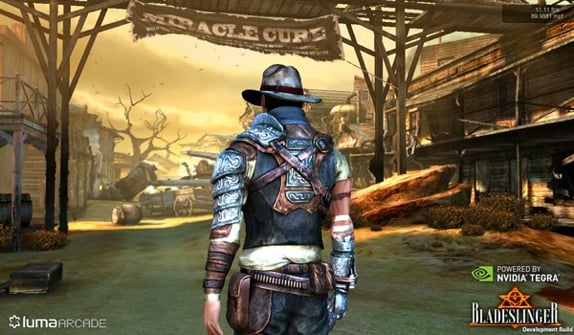Find Our Latest Video Reviews on YouTube!
If you want to stay on top of all of our video reviews of the latest tech, be sure to check out and subscribe to the Gear Live YouTube channel, hosted by Andru Edwards! It’s free!
Wednesday November 9, 2011 10:26 am
Nvidia launches Tegra 3, a “PC-class” mobile CPU

Nvidia has officially launched the Tegra 3 quad-core mobile chipset. It will be the first quad-core ARM-based chipset to appear in shipping products when it comes to market in the Asus EEE Pad Transformer Prime tablet.
Nvidia marked the official announcement by releasing a bunch of screen shots and performance details showing how Tegra 3 improves Web browsing, battery life, and—most importantly for Nvidia—gaming.
"Tegra 3 is about five times the performance of Tegra 2," said Matt Wuebbling, Nvidia Tegra's director of product marketing.
The gaming improvements are striking, and Nvidia spent a lot of time showing them off. You get more realism and more special effects on Tegra 3: much more realistic water simulations, blur effects, smoke, damage, textures and dynamic lighting. That comes in part from the chipset's new 12-core GPU, with triple the performance of Tegra 2's unit, Wuebbling said.
The gaming improvements are striking, and Nvidia spent a lot of time showing them off. You get more realism and more special effects on Tegra 3: much more realistic water simulations, blur effects, smoke, damage, textures and dynamic lighting. That comes in part from the chipset's new 12-core GPU, with triple the performance of Tegra 2's unit, Wuebbling said.
This doesn't just affect hard-core gamers' games like Shadowgun; Nvidia's been showing off a casual puzzle game called Sprinkle that uses Tegra 3 to render smoke. Tegra 3 can do all of this at higher screen resolutions, too. When we first saw the chipset in action, it was rendering a game at "1440p," higher than high-def resolution.
To encourage mobile devices to become primary gaming gadgets, Nvidia also added 3D Vision support and the ability to use PS3, Xbox 360, and Wii controllers, as long as the games involved are designed right. The idea is to hook up a Tegra 3-powered tablet to a 3D TV and replace a home's game console.
For non-gamers, Tegra 3 promises Web and video-transcoding performance at least twice as fast as Qualcomm's current dual-core, S3 8660 chipset, one of the fastest we've seen so far. Simple Web sites tend to use one core, while complex browsing with Flash uses two, Wuebbling said. All four cores come into play when gaming and when using some new features in Android 4.0, such as face detection.
And that doesn't come at the cost of battery life, either, according to Nvidia. The Tegra 3 offers a 61 percent savings in power usage over the Tegra 2 on video playback, and about a 30 percent savings when Web browsing, thanks to its "companion core" design.
"1.5 Ghz dual-core products have recently launched, and while they pushed the envelope on performance they had a tradeoff in battery life," Wuebbling said. Running more cores at lower speeds offers better battery life.
For people who haven't been following the continual drip of Tegra 3 news, this quad-core chipset actually has five cores. The fifth core works alone when the phone is doing things that don't require a lot of processing power. Unintuitively, that includes music and video playback, because those tasks are handled by additional chips in the system and not the main processors.
While Nvidia is primarily targeting Android with Tegra 3, it will also work with Windows 8 and Chrome OS, Nvidia vice president of product marketing Ujesh Desai said. The chipset will appear in tablets very soon and in phones during early 2012, he said.
This article, written by Sascha Segan, originally appeared on PCMag.com and is republished on Gear Live with the permission of Ziff Davis, Inc.











